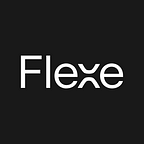Flexe Vice President of Product and Engineering, Anthony Girolamo, joined Elevano Managing Director, Amir Bormand, on The Tech Trek Podcast to discuss how Anthony applies lessons learned at Amazon and Microsoft to his current role at Flexe. Here are the highlights from their conversation. The following transcript has been revised for brevity and clarity.
Amir Bormand:
On this episode, we’re going to talk about processes to put in place at fast-growing companies. Anthony, to set the stage, can you describe what you did at Amazon and Microsoft?
Anthony Girolamo:
I knew I wanted to be an engineer from a young age when I would tinker with computers. After college, I joined Microsoft as an engineer, where I worked inside a core security group for a number of years. Later, I moved on to the digital rights management space, encrypting video, and learned how to rigorously engineer systems.
Then I moved to Amazon for almost nine years, where I was introduced to supply chain logistics engineering. I spent four years building a system to predict what people will buy on amazon.com, and I spent my last five years there helping to build systems that enabled Amazon to understand where all of its physical goods are and how they’re being processed.
One of the things that attracted me to a small company was the ability to move fast again and to get quick feedback from my customers.
Amir:
When you decided to leave the security that comes with working at the Amazons and the Microsofts of the world to go to Flexe, what’s the decision-making process?
Anthony:
When people join smaller companies, there’s a trade-off between speed and scale. At larger corporations, there’s security and the ability to have a massively scalable impact. However, things take longer because there are so many different use cases and people involved in getting something done. One of the things that attracted me to a small company was the ability to move fast again and to get quick feedback from my customers.
On a weekly basis, a team should be able to look back and identify moments of innovation.
Amir:
How much of what you did before translates over to your current role at Flexe?
Anthony:
I’ve adopted Amazon’s “one-way” and “two-way doors” decision-making framework, which stems from the premise that not all decisions are the same size and most decisions are easily reversible. I encourage our team to always ask, “what’s the worst thing that could happen with this decision?” If the decision relates to a deployment, that’s a one-way-door decision because it could impact an entire system and our customers, and it isn’t easily reversible. On the other hand, two-way-door decisions are low-risk, so we tend to move forward with those decisions quickly.
Amir:
Do you have an actual technical roadmap of what you see unfolding over the next 2–5 years?
Anthony:
I’m a big believer that a roadmap shouldn’t be one person’s plan; it should be the team’s plan. I tell all of my engineers, we’re here to innovate and create. If we feel like we’re always strapped for time, we’re doing something wrong. On a weekly basis, a team should be able to look back and identify moments of innovation. I often ask, “what innovation have we created?” If the answer is that we just deliver features, that’s a good signal that I should have a conversation with my managers and senior engineers to understand how we can improve creative thinking.
A good process solves an acute problem, and everybody knows what that process aims to solve. If the problem persists, we remove or evolve the process until we find a solution.
Amir:
As you continue to establish and build processes, how do you balance what needs more structure and efficiency without slowing things down? Is it more of an art than a science?
Anthony:
Absolutely. I think processes or mechanisms are guardrails. They help people be more effective in repeatable ways. The biggest danger of a process is when it’s not defined, or people don’t understand why it’s in place, or the process isn’t flexible enough for what people or the business needs.
When I think about the process, I start with the problem I want to solve. For example, we’ve rapidly increased our hiring efforts as our team continues to grow. Before, we just scheduled interviews every now and then. As we scaled, we received feedback from our engineers that their calendars were inundated with interview invites, and they struggled to find time to code. As a result, we applied a simple process where engineers would sign up to interview candidates during certain blocks of time that wouldn’t interfere with their focused coding time. The process introduced more predictability for our engineers.
A good process solves an acute problem, and everybody knows what that process aims to solve. If the problem persists, we remove or evolve the process until we find a solution. I believe in building an organizational ethos where there are no sacred cows, and everything should be questioned. Over time, that mentality will eradicate bad processes or processes that have run their course, and replace them with better practices.
Amir:
I think a lot of people do have thoughts of going to startups, and sometimes, especially as an engineering leader, they look at it, and they’re kind of curious about what it’s going to be like. It sounds like you solve different kinds of problems and, to your point, weighing scale versus speed.
Anthony:
I think the hope whenever you join a startup is that you trade your scale for speed, but you’ll get them both back in the future, and that’s the exciting part of the ride.
Learn more about Anthony and his work at Flexe in his #meetFlexe profile, a series that highlights the individuals who make up the Flexe team.
